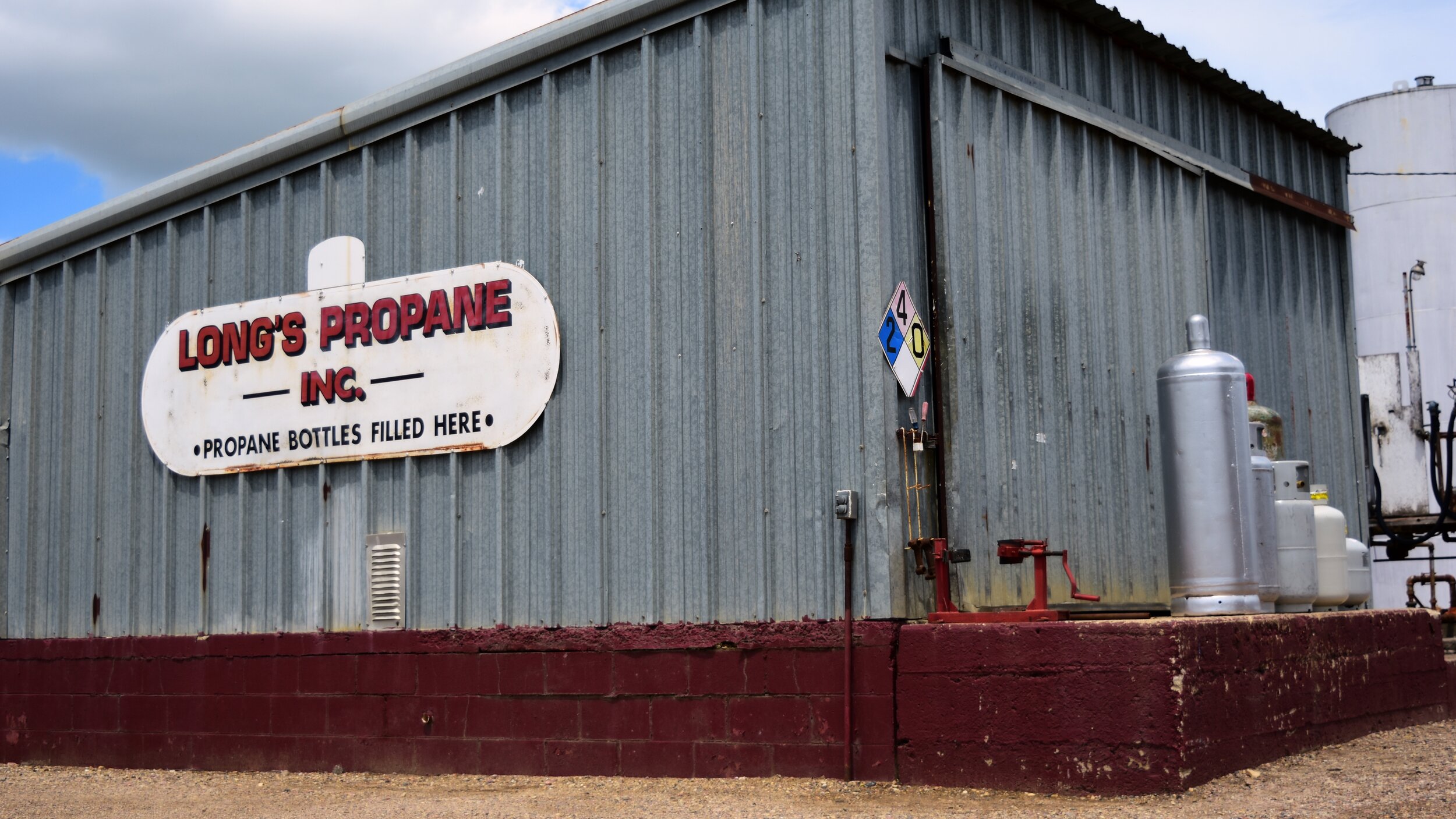Propane Facts
USES OF PROPANE
IN THE HOME
Consumers use propane for heating and cooling homes, heating water, cooking, refrigeration, drying clothes, barbecuing, lighting, and relaxing in front of the gas fireplace.
ON THE FARM
Propane is a staple on farms, where it is used in a wide range of agricultural applications:
Crop drying
Flame cultivation
Fruit ripening
Space heating—for barns, pig farrowing houses, chicken houses, stock tanks, nurseries, greenhouses, orchards, and incubators
Water heating
Refrigeration of foods
Running a variety of farm engines
COMMERCIAL AND INDUSTRIAL USES
Commercial establishments, such as hotels, restaurants and laundromats use propane in the same way a homeowner does: for heating and cooling air, heating water, cooking, refrigeration, drying clothes, barbecuing, and lighting. Many industrial sites rely on it for space heating, brazing, soldering, cutting, heat treating, annealing, vulcanizing, and many other uses. Petrochemical industries use propane in the manufacture of plastics.
PROPANE INDUSTRY
Propane is a hydrocarbon (C3H8) and is sometimes referred to as liquefied petroleum gas, LP-Gas or LPG. Propane is produced from both natural gas processing and crude oil refining. It is nontoxic, colorless and virtually odorless. As with natural gas, an identifying odor is added so the gas can be readily detected.
PROPANE IS A SAFE FUEL
The propane industry has developed numerous methods to ensure the safe transport and use of propane:
Propane equipment and appliances are manufactured to rigorous safety standards.
Propane has a narrow range of flammability when compared with other petroleum products. In order to ignite, the propane-air mix must contain from 2.2 to 9.6 percent propane vapor. If the mixture contains less than 2.2 percent gas, it is too lean to burn. If it contains more than 9.6 percent, it is too rich to burn.
Propane won't ignite when combined with air unless the source of ignition reaches at least 940 degrees Fahrenheit. In contrast, gasoline will ignite when the source of ignition reaches only 430 to 500 degrees Fahrenheit.
If liquid propane leaks, it doesn't puddle but instead vaporizes and dissipates into the air.
Because it is released from a pressured container as a vapor, propane can't be ingested like gasoline or alcohol fuels.
Because propane is virtually odorless and colorless in its natural state, a commercial odorant is added so propane can be detected if it leaks from its container.
PROPANE IS AN ENVIRONMENTALLY FRIENDLY FUEL
Propane is an approved, clean fuel listed in the 1990 Clean Air Act as well as the National Energy Policy Act of 1992. It is one of the lightest, simplest hydrocarbons in existence, and, as a result, is one of the cleanest burning of all fossil fuels. Burning coal to generate electricity releases carbon dioxide and other pollutants into the atmosphere. Per pound of fuel burned, coal emits more than twice the amount of carbon dioxide as does propane. By using propane gas instead of electricity, consumers can cut emissions and help preserve the environment. Propane gas is nontoxic, so it's not harmful to soil and water. Because propane does not endanger the environment, the placement of propane tanks either above or below ground is not regulated by the Environmental Protection Agency. According to the EPA, much of the sulfur dioxide in the atmosphere, which produces acid rain, is attributable to coal-fired electricity-generating facilities. In contrast, neither the process by which propane is produced nor the combustion of propane gas produces significant acid rain contaminants.

